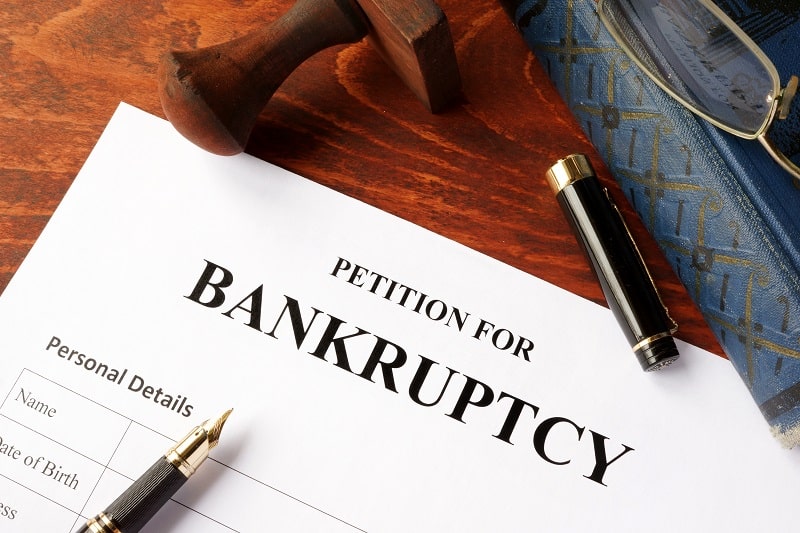Many debt relief options may not be feasible for consumers who feel like they are drowning in debt. Though a last-resort option, bankruptcy is a process that exists to give debtors a fresh start when they meet certain qualifying criteria.
Bankruptcy is a federal legal process designed to help consumers (and in some cases, businesses) reduce or eliminate their debt or pay off their delinquent accounts. A federal bankruptcy judge will determine your assets and liabilities and decide whether to discharge your debts. Some debts are dischargeable and some are not. Typically, the ones you can discharge are unsecured, that is, not backed by an asset like your home or car. If you are successful in your bankruptcy filing, you can not only be relieved from your obligation to pay your creditors, but your creditors will no longer be able to collect from you or sue you for your unpaid debts.
There are two primary types of bankruptcy filings for individuals: Chapter 7 and Chapter 13. Chapter 7 is the liquidation provision, wherein you liquidate all your assets to pay off your creditors. Chapter 13 involves devising a payment plan with your creditors to pay back your debts over a three to five year period.
Though this process can help you find relief from your debt, it’s vital to understand that filing for bankruptcy has serious long-term effects on your credit report and can impact your freedom to open new accounts in the future. Not to mention, the process can cost you: You may not always be able to recoup your court costs, filing fees, and attorneys’ fees. As such, you should think long and hard – and seek professional counsel – before you declare bankruptcy.
Bankruptcy Specifics: Chapter 7 vs. Chapter 13
Chapter 7 is the “liquidation” chapter of the Bankruptcy Code. It allows the trustee assigned at the start of your case to sell some of your property to pay off your debts. Certain federal and state exemptions will protect some of your property, which means it will NOT be liquidated to pay off your creditors.
Most unsecured debts are eligible for Chapter 7. Examples include:
- Credit card debt
- Personal loans
- Medical bills
- Personal judgments
- Some types of income tax debt
- Some types of utility and rental payments
Other types of debt are NOT eligible, for instance, most income taxes, student loans, alimony, and child support payments.
A chapter 7 bankruptcy is:
- Fast-moving. In many cases, you may be able to have your debt discharged in as little as 90 days.
- Likely to result in you losing some assets, but the Bankruptcy Code does include certain assets that are exempt.
- Subject to your qualification based on your income, household size, assets, liabilities, and geographic area.
- Likely to remain on your credit report for up to ten years.
On the other hand, Chapter 13 involves devising a payment plan wherein you work with your creditors to pay back your debts. This option works best for those with a consistent income that allows them to make regular payments to creditors. Chapter 13 carries a number of benefits over Chapter 7. For one, debtors can stop foreclosure proceedings and even cure a delinquent mortgage. As such, it can allow debtors to keep their homes and other property. It also allows consumers to reschedule their secured debts (other than a mortgage) throughout the life of their repayment plan. This can lower their payments, making them more manageable.
A chapter 13 bankruptcy is:
- A slower process. You will pay back your debts – or see them discharged – in three to five years.
- More likely to help you keep your assets.
- Set up to devise a payment plan between you and your creditors. The court will put together an estimated payment amount based on your total assets and liabilities.
- Likely to remain on your credit report for up to seven years.
The process: How bankruptcy works
Every case will look different based on the debtor’s unique circumstances. However, in almost all bankruptcy cases, there are certain initial steps that will always look similar.
Organizing your financials
As an initial step, you will compile your financial records – assets, debts, income, expenses, and more – and submit them to the court to review.
Credit counseling
Generally, you will be expected to exhaust other options before declaring bankruptcy. Credit counseling is a way to do this.
Filing the petition
Though you may complete this step without hiring an attorney, it is inadvisable. Bankruptcy laws are complex, and you are taking a serious risk by trying to go it alone. An attorney can help you fill out the forms properly, represent you in court, and help you understand your options.
Meeting with your creditors
If the court accepts your petition, your case will be assigned to a bankruptcy trustee. This person will set up a conference with your creditors. From there, your case can unfold in many different ways. It may be resolved outside of court, or if it goes to a hearing, a judge will decide whether to discharge your debt.
Is bankruptcy for me?
It depends. The best way to determine whether this debt relief option is for you is to meet with a professional: a qualified credit counselor, a debt relief company, or an attorney who specializes in handling bankruptcy cases.
In many cases, bankruptcy can help consumers start fresh when their debt has become virtually unmanageable. But in other cases, it may make more sense to simply pay down the debt through a debt consolidation loan or other debt relief option.
In particular, bankruptcy will NOT help you if your debt is:
- A federal student loan (unless you meet certain specific criteria)
- Court-ordered alimony or child support
- Incurred in the six months before you filed for bankruptcy
- Certain types of tax obligations
Make sure you do your due diligence to confirm that you are eligible and that bankruptcy would be the best debt relief option for you.


